Restoring Ocean Jewels: The Art of Coral Restoration in Manuel Antonio
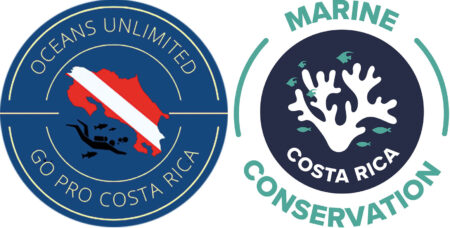 Costa Rica is a beautiful paradise both above and below the water. Here in Manuel Antonio we have a wonderful coral reef below the waves all around the National Park area that is home to many species of fish and creatures. Coral reefs are crucial to the health of our oceans, acting as nurseries for marine life and protecting shorelines from erosion. In Costa Rica, corals play a vital role in sustaining the rich biodiversity of the Pacific and Caribbean coasts. Unfortunately, like many coral reefs worldwide, those in Costa Rica face threats due to climate change, pollution, and overfishing. In Manuel Antonio, we are working hard to restore the reefs that we have with a coral restoration project, which is run by the non-profit Marine Conservation Costa Rica in partnership with the local Dive shop Oceans Unlimited. This month we thought we would outline the coral restoration process that we undertake here in the area to give you a better insight into everything that is involved.
Costa Rica is a beautiful paradise both above and below the water. Here in Manuel Antonio we have a wonderful coral reef below the waves all around the National Park area that is home to many species of fish and creatures. Coral reefs are crucial to the health of our oceans, acting as nurseries for marine life and protecting shorelines from erosion. In Costa Rica, corals play a vital role in sustaining the rich biodiversity of the Pacific and Caribbean coasts. Unfortunately, like many coral reefs worldwide, those in Costa Rica face threats due to climate change, pollution, and overfishing. In Manuel Antonio, we are working hard to restore the reefs that we have with a coral restoration project, which is run by the non-profit Marine Conservation Costa Rica in partnership with the local Dive shop Oceans Unlimited. This month we thought we would outline the coral restoration process that we undertake here in the area to give you a better insight into everything that is involved.
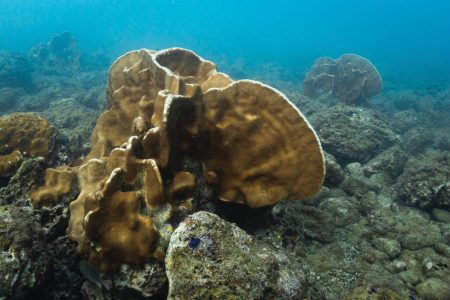 Why Coral Matters
Why Coral Matters
Coral reefs are often called the rainforests of the sea, and for good reason. They provide a habitat for countless marine species, offering shelter, food, and breeding grounds. In Costa Rica, hard corals contribute to the vibrant marine ecosystems along both coasts, supporting the diversity of marine life that attracts snorkelers and divers worldwide.
The Coral Restoration Process
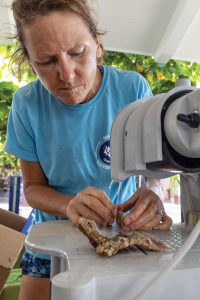 Coral restoration involves a delicate and meticulous process to rejuvenate damaged or degraded coral reefs. One of the first things is to identify the species of coral to restore. Here we are restoring 4 types of hard corals that are found all around the Costa Rican reef.
Coral restoration involves a delicate and meticulous process to rejuvenate damaged or degraded coral reefs. One of the first things is to identify the species of coral to restore. Here we are restoring 4 types of hard corals that are found all around the Costa Rican reef.
To begin the process we first do something called fragmenting. This involves carefully taking small pieces, or fragments, of healthy coral colonies. We either break off small pieces of colonies already on the reef or look for some that already have broken off if we are lucky. we cut them using a special saw into very small pieces and place them on plugs. These plugs get moved into our nurseries on the reef where the fragments then start growing. We clean and measure them regularly.
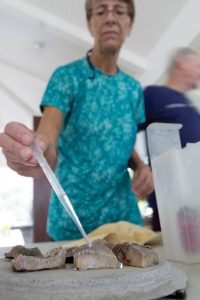 Once the corals have grown sufficiently in the nurseries, it’s time for the grand finale – outplanting. This involves carefully transplanting the matured corals back onto the degraded reefs. The locations for outplanting are chosen strategically, focusing on areas where coral cover has been lost or damaged.
Once the corals have grown sufficiently in the nurseries, it’s time for the grand finale – outplanting. This involves carefully transplanting the matured corals back onto the degraded reefs. The locations for outplanting are chosen strategically, focusing on areas where coral cover has been lost or damaged.
Think of it as nature’s puzzle – each fragment has the potential to grow into a thriving coral colony.
How do you get to see this and get involved?
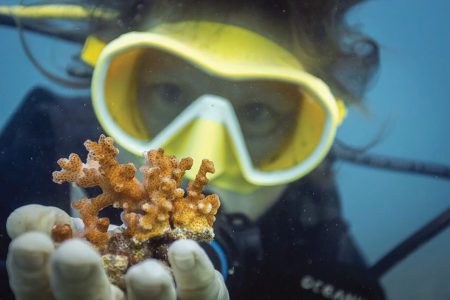 So that you can find out and get involved with the project, we regularly hold coral fragmenting workshops in the marina. You can come and watch the process of breaking the corals and sticking them onto the reef plugs. Also, a new addition to the dive shop is now a small fish tank in the front of the shop. We will be placing some of the coral plugs to allow them to grow under more monitored conditions. You can come and see them in the tank, growing, ready to be outplanted back on the reef. We also will have a couple of other residents in the tank, helping keep the corals clean. If you come down and visit them, you can see who they are.
So that you can find out and get involved with the project, we regularly hold coral fragmenting workshops in the marina. You can come and watch the process of breaking the corals and sticking them onto the reef plugs. Also, a new addition to the dive shop is now a small fish tank in the front of the shop. We will be placing some of the coral plugs to allow them to grow under more monitored conditions. You can come and see them in the tank, growing, ready to be outplanted back on the reef. We also will have a couple of other residents in the tank, helping keep the corals clean. If you come down and visit them, you can see who they are.
So, as you are here exploring the enchanting underwater world of Costa Rica, let’s remember the importance of coral reefs. They are not only breathtakingly beautiful but also crucial to maintaining the balance of marine ecosystems. Coral restoration, with its innovative techniques of fragmenting, growing in nurseries, and outplanting, offers a promising path to revive these underwater wonders.
Don’t forget to come down and visit us in the marina to see the process of coral restoration at work and learn more about it.
By supporting and understanding the process of coral restoration, we can all play a role in preserving the ocean jewels that make Costa Rica’s coasts so spectacular. Together, let’s ensure that future generations can continue to marvel at the vibrant and thriving coral reefs beneath the waves.
